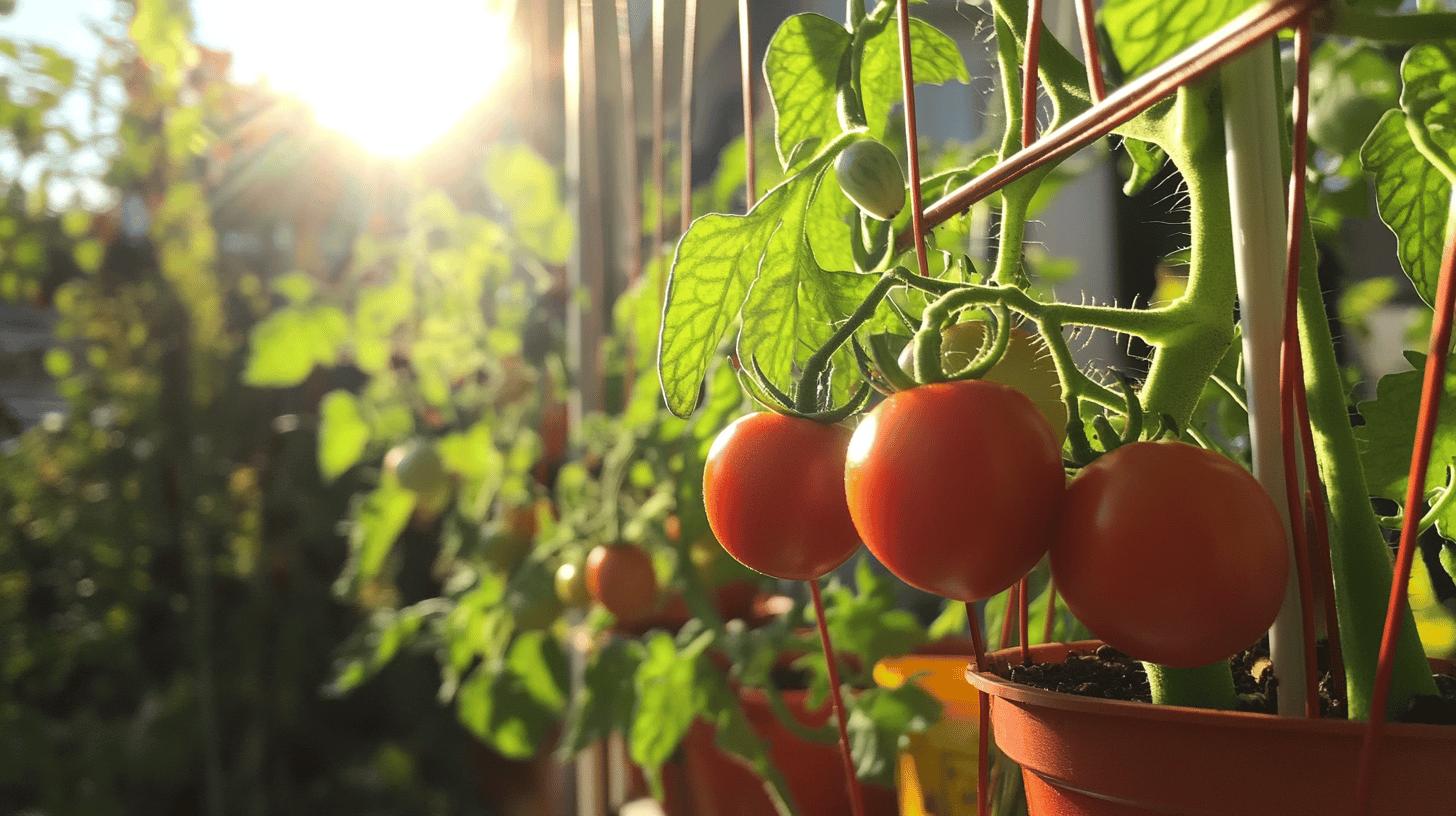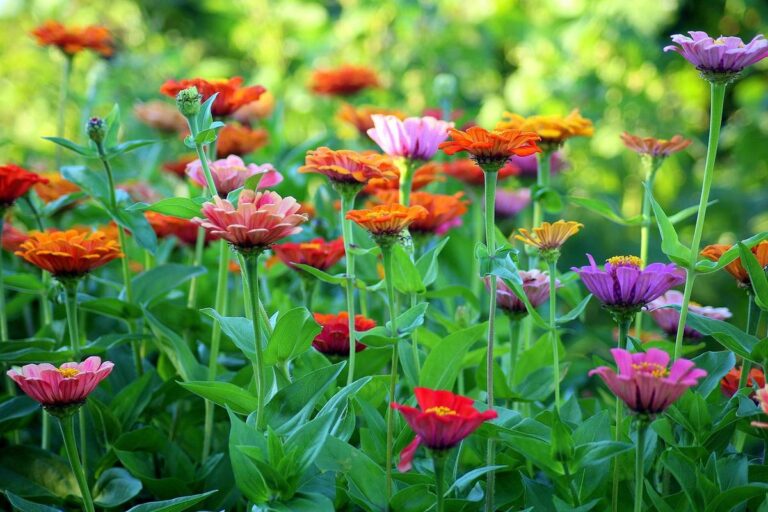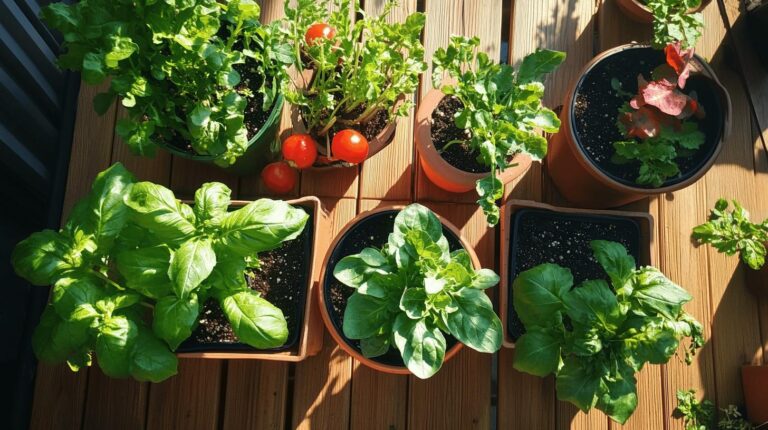Boost Your Tomato Harvest: Growing in Pots
Have you ever imagined picking juicy, ripe tomatoes right from your patio, with minimal space and maximum yield? Container gardening isn’t just a gardener’s dream—it’s a practical solution for those looking to maximize their harvests while saving on space. Growing tomatoes in pots allows precise control over the growing environment, making it perfect for urban or small-scale gardening enthusiasts. With the right techniques and pot choices, as detailed in this guide, your porch could turn into a fruitful oasis. Let’s dive into how you can boost your tomato harvest with just a few strategic steps.
Choosing the Right Pots for Growing Tomatoes
When it comes to growing tomatoes in pots, selecting the right container is crucial for ensuring healthy growth and a bountiful harvest. Large pots are essential because they provide ample space for root development, which is vital for producing strong, healthy plants. Indeterminate varieties, known for their continuous growth and fruit production, thrive best in large containers such as 20-gallon Smart Pots. These spacious pots allow the roots to spread and access nutrients efficiently. On the other hand, determinate varieties, which grow to a fixed size and produce fruit over a shorter period, can do well in 18-inch diameter pots. For those growing patio-type tomatoes, a 5-gallon bucket can suffice, though it will require more frequent watering and feeding to support the plant’s needs.
- 20-gallon Smart Pots for indeterminate varieties
- 18-inch diameter pots for determinate tomatoes
- 5-gallon buckets for patio-type tomatoes
- Fabric pots for improved breathability
- Plastic pots for cost-effectiveness
Fabric pots offer distinct advantages over traditional plastic ones, particularly in terms of breathability. They allow air to circulate through the sides of the pot, promoting healthier root systems and preventing problems like root rot. This enhanced aeration can lead to more robust tomato plants. While plastic pots might be more cost-effective, they lack the breathability of fabric pots, which is a key factor in maintaining optimal soil conditions. For anyone serious about maximizing their tomato yield, investing in fabric pots is a wise choice.
Selecting the Best Soil for Tomato Plants in Pots

Choosing the right soil is just as important as selecting the correct pot size for growing tomatoes. High-quality organic potting soil is essential for promoting healthy growth and robust fruit production. Organic soils avoid harmful chemicals, ensuring that the tomatoes you grow are safe and delicious. These soils typically offer excellent breathability and moisture retention, two critical factors that help prevent common problems like root rot and overwatering. By providing a balanced environment, organic potting soils support strong root development and increase the plant’s ability to absorb nutrients.
- Foxfarm’s Happy Frog
- Miracle Gro Performance Organic
- Redbud Organic No-till
Reusing potting soil can be a practical and sustainable choice when growing tomatoes in pots. You can reuse potting soil for up to three seasons before needing to refresh it, which helps reduce waste and cost. However, it’s crucial to monitor the soil’s condition. If you notice signs of nutrient depletion or compaction, it might be time to revitalize the soil with fresh organic matter or consider replacing it entirely. This practice ensures your tomato plants always have the nutrients they need for a productive growing season.
Optimal Tomato Varieties for Container Growing
Choosing the right tomato varieties is crucial when it comes to growing them successfully in pots. Determinate varieties are often the preferred choice for containers due to their compact growth habit. They grow to a certain height, which makes them easier to manage in small spaces, and they produce their entire crop over a short period. This characteristic is beneficial for gardeners looking to harvest all their tomatoes at once, perfect for canning or preparing large batches of sauce.
For those interested in determinate tomatoes, consider varieties like Better Bush, Bush Goliath, and Patio. These are specifically bred to thrive in confined spaces, making them ideal for containers. Better Bush and Bush Goliath offer robust flavor and are known for their disease resistance, while Patio is a classic choice for its reliable production and ease of care. Each of these varieties will give you a generous yield without overwhelming your patio or balcony space.
Cherry tomatoes are an excellent option for container growing, especially if space is at a premium. Their smaller size and prolific nature make them perfect for small gardens. Varieties like Sungold and Super Sweet 100 are particularly popular, offering sweet, flavorful fruits that are easy to harvest and enjoy. These cherry tomatoes can thrive in pots, providing a steady supply of bite-sized treats throughout the growing season.
Planting Techniques for Tomatoes in Pots
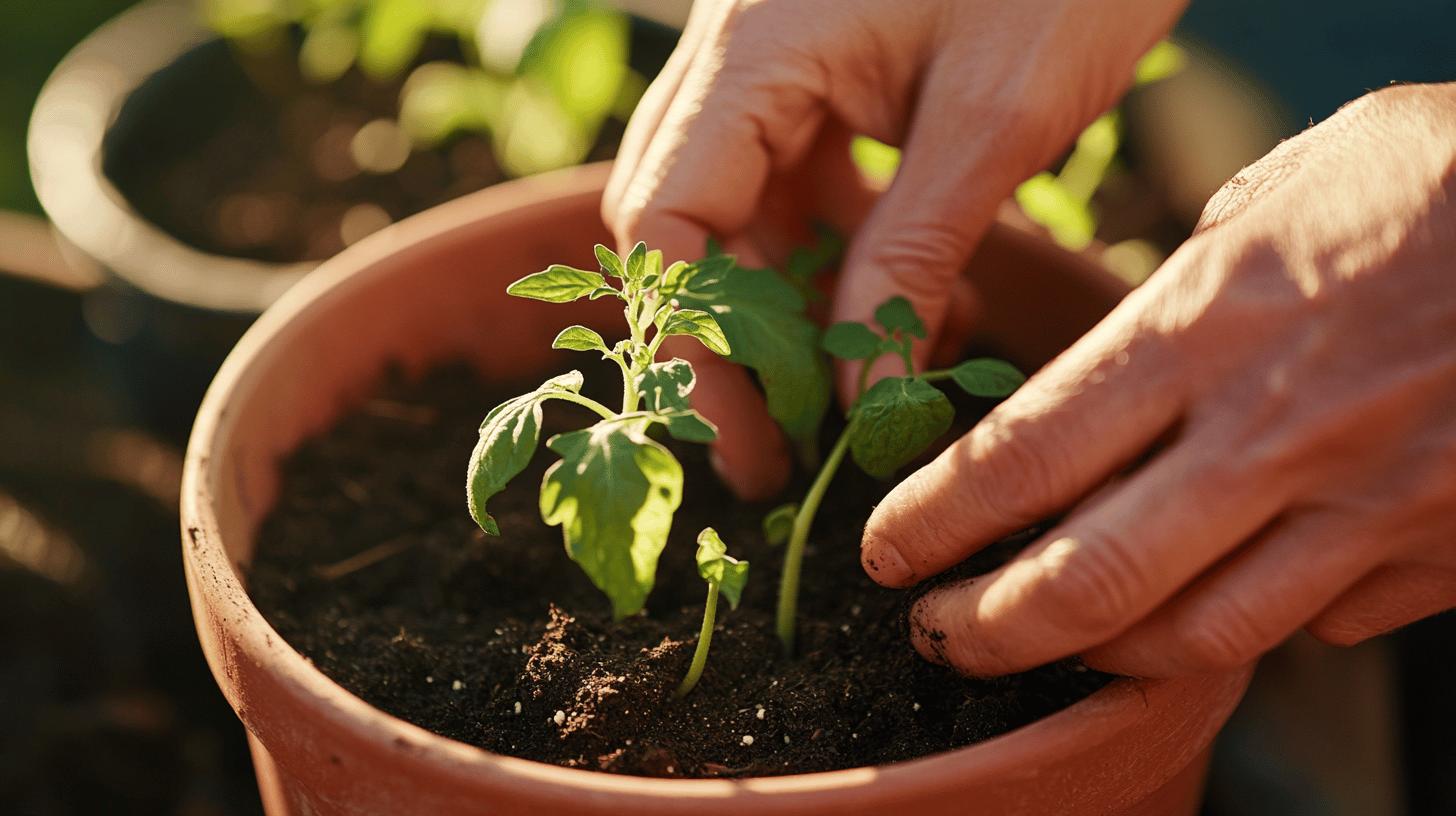
Timing is everything when it comes to planting tomatoes in pots. The first step is to ensure that you wait until after the last frost date in your area before moving your tomato plants outdoors. This is crucial because frost can damage or even kill young plants, setting back your entire growing season. Before planting, make sure your pots are ready with a high-quality organic potting mix, which provides the ideal environment for your tomato plants to thrive.
- Prepare pots with quality potting mix.
- Start seeds indoors or use healthy transplants.
- Repot transplants once before final planting.
- Bury two-thirds of the stem for support.
- Water thoroughly after planting.
Once your tomato plants are in their pots, it’s important to keep an eye on the weather. If a cold snap is forecasted, take precautions by covering your pots with a frost cloth or moving them to a sheltered location. This simple step can protect your plants from unexpected temperature drops, ensuring they remain healthy and continue to grow.
Burying two-thirds of the tomato stem when planting is a technique that encourages robust root development. By removing the lower leaves and planting deeper, you provide stability and allow the stem to develop additional roots. This foundation supports the plant as it grows taller and begins to bear fruit, leading to a stronger, more productive tomato plant overall.
Watering and Fertilizing Potted Tomato Plants
Maintaining a consistent watering schedule is vital for the success of your potted tomato plants. Tomatoes require regular and even moisture to produce healthy fruits. In warm weather, daily watering is essential to prevent the soil from drying out. The best practice is to check the soil moisture regularly; if the first inch of soil feels dry, it’s time to water. For those who manage smaller setups, manual watering works well, but remember that consistency is key to preventing stress on the plants.
Choosing the right fertilizer and applying it properly is just as important as watering. Potted tomatoes are heavy feeders, needing a steady supply of nutrients to thrive. Fertilizers like Miracle-Gro® Performance Organics® Edibles Plant Nutrition Granules are excellent because they provide the necessary nutrients for continuous growth. A balanced fertilizer should be applied every two weeks to keep your plants vigorous and productive. Mid-season, consider giving your tomatoes an extra nutrient boost to support fruit development.
Using a drip irrigation system can significantly benefit larger container gardens. This method allows for precise and efficient water delivery, ensuring that each plant receives adequate moisture without overwatering. Drip systems can be adjusted to suit the specific needs of your garden, reducing water waste and making maintenance easier. By incorporating drip irrigation, you not only save time but also improve the overall health and yield of your potted tomatoes.
| Watering Frequency | Fertilizer Schedule |
|---|---|
| Daily during warm weather | Every 2 weeks |
| Check soil moisture regularly | Use balanced fertilizer |
| Drip irrigation for large setups | Apply nutrient boost mid-season |
| Manual watering for small setups | Adjust based on growth stage |
Supporting and Pruning Tomato Plants in Pots
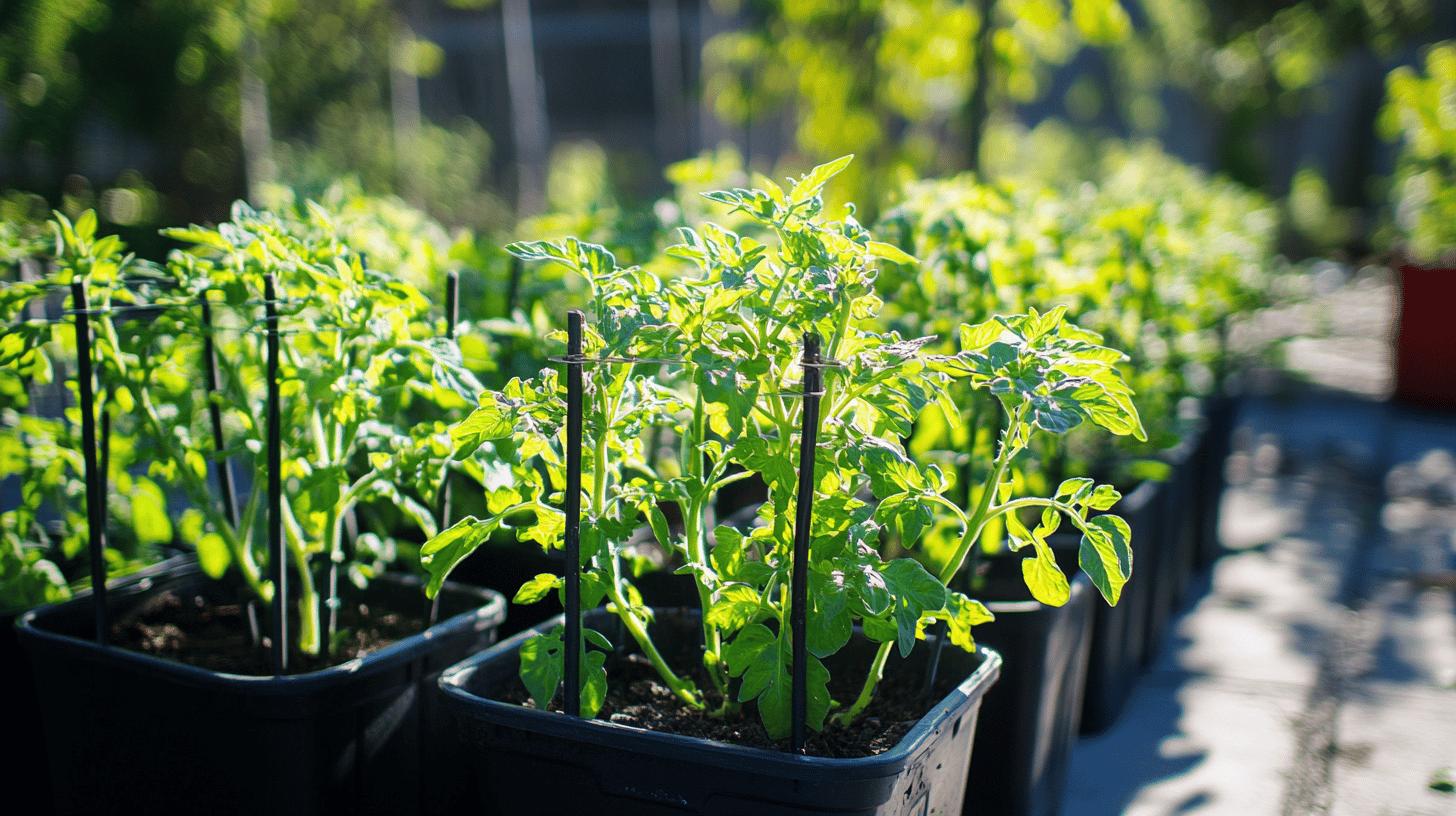
Supporting tomato plants in pots is essential to ensure they grow upright and produce a healthy yield. For determinate varieties, tomato cages are a practical choice. They provide the right amount of support without overwhelming the plant, which typically grows to a manageable height. Indeterminate varieties, on the other hand, require more robust support due to their tendency to grow taller and produce fruit continuously. Using rebar and wire structures can accommodate their height and weight, preventing the plants from toppling over. It’s important to install these supports early in the growing season to avoid disturbing the roots, which can damage the plant and hinder its growth.
- Remove suckers to manage size.
- Prune lower leaves to improve airflow.
- Trim excess foliage to direct energy to fruits.
- Conduct regular checks for disease and pest signs.
Pruning is another critical task that enhances the health and productivity of tomato plants in pots. By carefully removing suckers and trimming excess foliage, you help the plant focus its energy on developing fruit rather than unnecessary growth. Pruning the lower leaves can improve airflow around the plant, reducing the risk of diseases. Regularly checking for signs of pests and diseases is vital to catch any issues early. This routine maintenance not only boosts fruit production but also ensures that your plants remain vigorous and healthy throughout the growing season.
Managing Pests and Diseases in Potted Tomato Plants
Pests can be a nuisance for potted tomato plants, but the good news is that they are manageable with the right approach. Common pests include aphids, whiteflies, and spider mites. These insects can cause significant damage if left unchecked, so it’s crucial to conduct regular checks on your plants. Early detection is key to preventing an infestation from taking hold. Organic control methods, such as using neem oil, are effective in managing these pests without introducing harmful chemicals into your garden. Neem oil disrupts the life cycle of pests, reducing their population while being safe for beneficial insects like bees.
Preventing diseases in potted tomatoes is equally important, especially conditions like blossom end rot, which is often caused by inconsistent watering and calcium deficiency. Growing tomatoes in pots can sometimes help reduce blossom end rot, as you have more control over the soil environment. Ensure that your potting mix is rich in nutrients, and maintain a consistent watering schedule to prevent fluctuations that could stress the plants. Incorporating crushed eggshells or a calcium-rich supplement into the soil can also help provide the essential nutrients needed to prevent this common issue.
Avoiding common mistakes in container growing can further enhance the health of your tomato plants. One mistake is overcrowding; ensure each plant has enough space and airflow to reduce the risk of disease spread. Overwatering can also be detrimental, leading to root rot and other issues. It’s essential to check the soil moisture regularly and adjust watering accordingly. Lastly, using fresh potting soil each season or refreshing it can prevent the build-up of pathogens that might harm your plants.
Maximizing Tomato Yield in Container Gardens
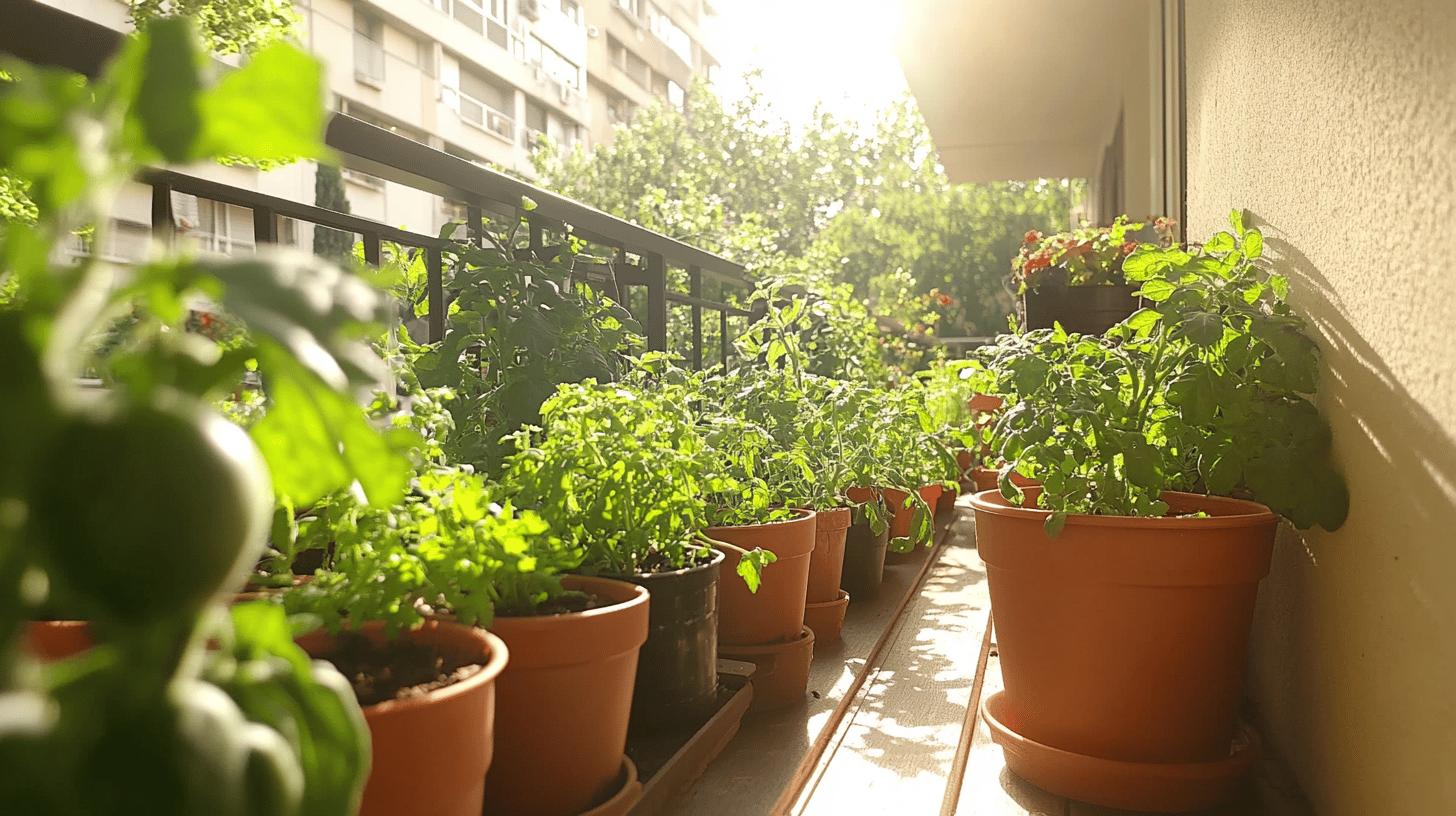
Selecting the right tomato varieties is crucial when aiming to maximize yield in container gardens. High-yielding varieties, often determinate types, are best suited for small spaces as they are bred to produce a large number of fruits in a compact form. Varieties like Better Bush and Bush Goliath are known for their prolific nature and can be a game-changer for those looking to get the most out of their potted garden. Cherry tomatoes, such as Sungold, also offer high yields and are convenient for continuous harvesting. Choosing the right variety will set the foundation for a successful and bountiful harvest.
- Choose high-yielding varieties.
- Optimize sunlight exposure.
- Use vertical space with trellises.
- Provide consistent nutrients.
- Prune for better airflow and fruit production.
Optimizing sunlight and space utilization is key to getting the most out of your container garden. Position your pots where they can receive at least six to eight hours of sunlight each day. If space is limited, consider using vertical gardening techniques to grow upward rather than outward. Trellises and stakes can support the plants as they reach for the sun, making efficient use of vertical space. This not only maximizes the available growing area but also helps in maintaining plant health by improving air circulation.
Consistent care is the cornerstone of achieving high yields in container-grown tomatoes. Regular watering and feeding are essential, as potted plants rely on you to provide what they can’t get from the ground. Use a balanced fertilizer every couple of weeks to supply the necessary nutrients. Pruning is also critical; removing suckers and excess foliage focuses the plant’s energy on fruit production rather than leafy growth. Regular checks for pests and diseases ensure that any issues are addressed promptly, keeping your plants healthy and productive throughout the growing season.
Seasonal Care and End-of-Season Practices for Potted Tomatoes
As the growing season draws to a close, it’s time to focus on end-of-season care for your potted tomato plants. Once the plants have finished producing, remove any dead or spent plants from the pots. This helps prevent diseases from overwintering in the soil, which could affect next season’s crops. Discard the old soil if you plan to grow tomatoes again in the same pots, as it may harbor pathogens specific to the tomato family. Proper disposal of plant debris is crucial to minimize the risk of pests and diseases carrying over to the next season.
Preparing your pots for winter or reuse involves a thorough cleaning process to ensure they are ready for the next planting cycle. Begin by scrubbing the pots with a mild soap and water solution to remove any soil and residue. Follow this by sterilizing the pots with a bleach solution, using one part bleach to nine parts water. This step is essential to kill any lingering pathogens and provide a clean slate for your future plants. Once cleaned, allow the pots to dry completely before storing them in a sheltered area to protect against winter weather.
Understanding the lifespan of tomato plants in containers can help you plan for future growing seasons. While tomatoes are typically grown as annuals, with proper care, some determinate varieties can have an extended productive period in warmer climates. To maximize the lifespan of your plants, ensure they receive consistent watering and nutrients throughout the growing season. Additionally, providing adequate support and protection from extreme weather can help extend their life. By following these practices, you not only ensure a successful harvest but also prepare your containers for many fruitful seasons to come.
Final Words
As we’ve explored, growing tomatoes in pots requires attention to detail, from selecting the right containers and soil to choosing suitable tomato varieties. Understanding how to plant, water, and support your plants sets the stage for successful, bountiful harvests.
These practices not only optimize your space but also enhance the joy of gardening. Growing tomatoes in pots allows for flexibility and control, bringing the taste of fresh tomatoes to even the smallest of spaces.
Embrace these tips, and watch your container garden flourish with tasty rewards!
FAQ
Q: How well do tomatoes grow in pots?
A: Tomatoes grow well in pots, especially when the right size and type of container is chosen. Adequate watering, support, and quality soil further enhance growth.
Q: What size containers are best for growing tomatoes?
A: For indeterminate tomatoes, use 20-gallon pots. Determinate varieties do well with 18-inch diameter pots, while patio types can thrive in 5-gallon buckets.
Q: How should I start growing tomatoes in pots from seeds?
A: Begin after the last frost date. Prepare pots with quality soil, start seeds or use transplants, repot once, support stems, and water thoroughly.
Q: How often should I water tomatoes in pots?
A: Water potted tomatoes daily during warm weather and ensure consistent soil moisture to avoid stress and promote healthy growth.
Q: What soil is best for potted tomato plants?
A: High-quality organic potting soil, such as Foxfarm’s Happy Frog or Miracle Gro Performance Organic, is ideal for promoting healthy growth.
Q: Do tomatoes need pruning when grown in pots?
A: Yes, pruning helps manage plant size and improves fruit production. Regularly remove suckers, lower leaves, and trim excess foliage for better results.
Q: How deep should tomato containers be?
A: Containers should be at least 18 inches deep to encourage proper root development and ensure plant stability.
Q: What should I place at the bottom of a tomato container?
A: Place stones or mesh at the bottom for drainage, preventing waterlogging and encouraging healthy root systems.
Q: How can I grow cherry tomatoes in pots?
A: Cherry tomatoes thrive in pots when provided with suitable support, quality soil, consistent watering, and occasional pruning for best results.
Q: How do I prevent common tomato-growing mistakes in pots?
A: Ensure proper water drainage, use quality soil, maintain a consistent watering schedule, and regularly check for pests and diseases.
